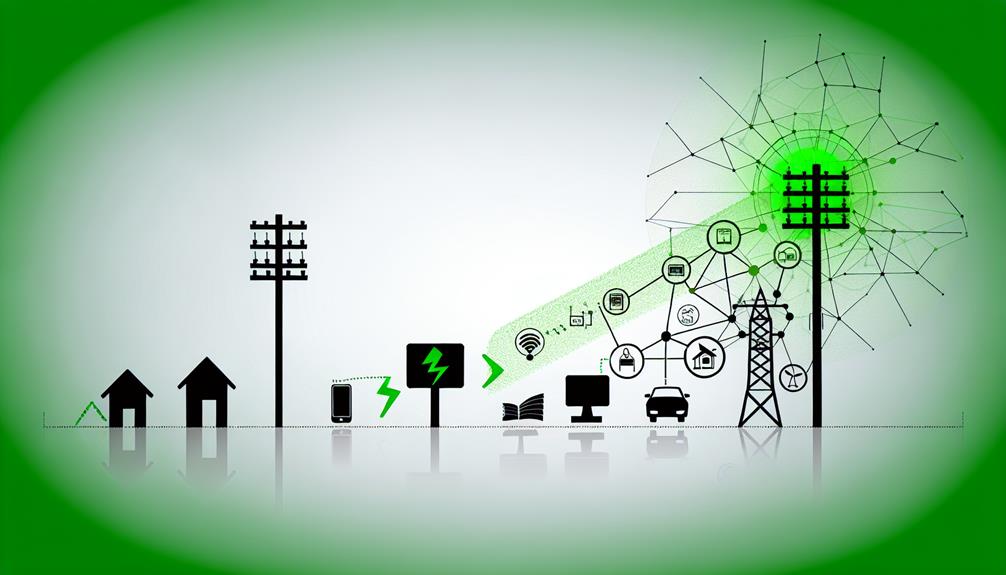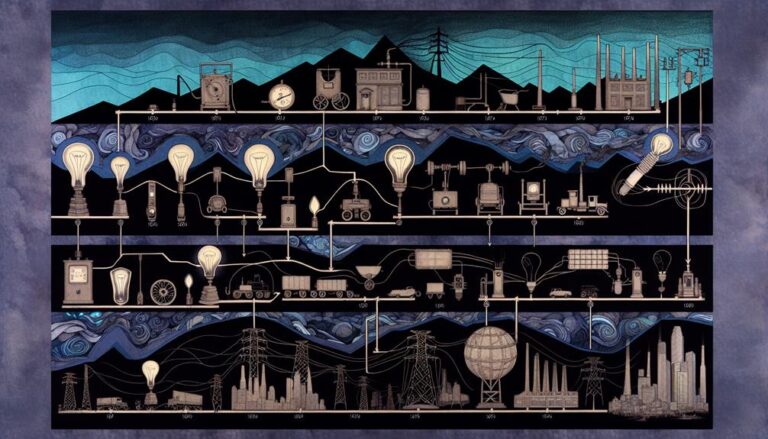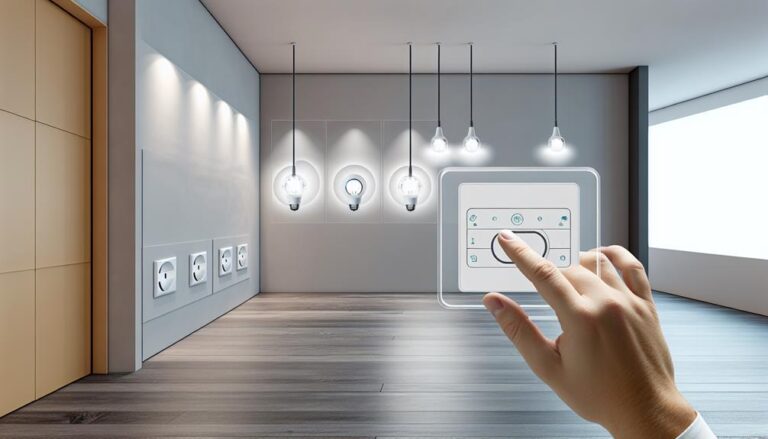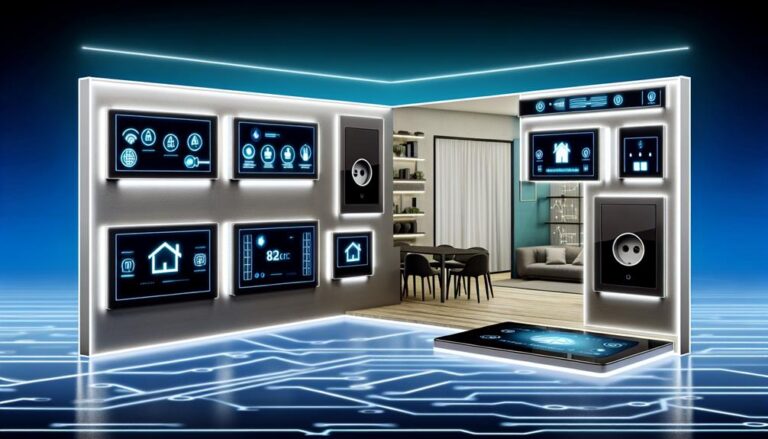The Impact of Technology on Electrical Services
Imagine walking into a dark room, fumbling around to find the light switch, only to realize that it no longer exists. Instead, the room senses your presence and illuminates itself with a soft glow.
This is just one example of the impact of technology on electrical services. As we navigate the ever-evolving landscape of innovation, we find ourselves embracing automation, energy efficiency, and safety measures that were once mere fantasies.
But what does this mean for the future of electrical services? How will these advancements continue to shape our daily lives?
Hold on tight as we explore the fascinating world where technology and electricity intertwine, revealing a future that is both awe-inspiring and practical.
Key Takeaways
- Increased efficiency and accuracy in tasks and processes
- Energy efficiency and conservation through smart management systems and appliances
- Integration of renewable energy sources for a sustainable and resilient energy future
- Advancements in smart home technology for convenience and customization of living environments
- Enhanced safety measures and monitoring systems for improved safety and risk minimization in electrical services
Automation in Electrical Systems
Automation plays a crucial role in enhancing the efficiency, accuracy, and reliability of electrical systems. By automating various tasks and processes, technology has revolutionized the way electrical systems function, providing numerous benefits to users.
One significant advantage of automation is the increased efficiency it brings to electrical systems. With automation, tasks that were once time-consuming and labor-intensive can now be completed quickly and effortlessly. This not only saves time but also reduces the workload on individuals, allowing them to focus on more critical aspects of their work.
Moreover, automation ensures a higher level of accuracy in electrical systems. By eliminating human errors, automation minimizes the chances of mistakes, leading to more reliable and consistent results. This is especially crucial in industries where precision is paramount, such as power generation and distribution.
Additionally, automation enhances the reliability of electrical systems by continuously monitoring and controlling various parameters. This proactive approach allows for timely detection and prevention of potential issues, reducing downtime and ensuring uninterrupted power supply.
Energy Efficiency and Conservation
To further optimize electrical systems, the focus now turns to maximizing energy efficiency and conservation. In today’s world, where the demand for electricity continues to rise, it is crucial to find ways to reduce energy consumption while still meeting the ever-increasing needs. This is where advancements in technology play a significant role.
One of the key strategies for achieving energy efficiency and conservation is through the implementation of smart energy management systems. These systems utilize real-time data and automation to intelligently control and monitor energy usage. By analyzing patterns and adjusting settings accordingly, these systems can help minimize energy waste and optimize efficiency.
Another approach is the use of energy-efficient appliances and devices. These products are designed to consume less electricity while providing the same level of performance. For instance, LED lighting fixtures are a popular choice due to their low energy consumption and long lifespan. Additionally, energy-efficient HVAC systems and smart thermostats can significantly reduce energy usage in heating and cooling applications.
To provide further insight, below is a table showcasing some examples of energy-efficient technologies and their benefits:
| Technology | Benefits |
|---|---|
| Smart lighting | Reduced energy consumption, longer lifespan |
| Energy monitoring | Real-time data for better energy management |
| Power factor correction | Improved energy efficiency, reduced electricity costs |
| Solar panels | Renewable energy source, reduced dependence on the grid |
| Energy storage | Efficient use of excess energy, backup power supply |
Integration of Renewable Energy Sources
Renewable energy sources are being integrated into electrical systems to meet the growing demand for sustainable and clean energy. This integration is driven by the recognition of the environmental and economic benefits of renewable energy, as well as the need to reduce reliance on fossil fuels.
The integration of renewable energy sources into electrical systems involves several key steps:
- Assessment of renewable energy potential:
Before integrating renewable energy sources, it’s essential to assess the potential of different sources such as solar, wind, hydro, and geothermal in a given location. This assessment involves analyzing factors like resource availability, intermittency, and compatibility with existing infrastructure.
- Design and planning:
Once the potential of renewable energy sources is determined, the next step is to design and plan the integration. This includes determining the optimal mix of renewable energy technologies, sizing the systems, and considering factors like grid compatibility and energy storage options.
- Infrastructure upgrades:
Integrating renewable energy sources often requires upgrading the existing electrical infrastructure to accommodate the variable nature of renewable generation. This may involve installing smart grids, advanced control systems, and energy storage solutions to ensure a stable and reliable power supply.
- Policy and regulatory support:
Governments play a crucial role in facilitating the integration of renewable energy sources by implementing supportive policies and regulations. These may include feed-in tariffs, tax incentives, and renewable portfolio standards, which encourage the development and deployment of renewable energy technologies.
The integration of renewable energy sources into electrical systems is a complex and ongoing process. However, by leveraging technology and implementing supportive policies, it’s possible to achieve a more sustainable and resilient energy future.
Advancements in Smart Home Technology
As we shift our focus from the integration of renewable energy sources into electrical systems, it’s important to explore the advancements in smart home technology. Smart home technology refers to the integration of various devices and systems within a home to create a more efficient and convenient living environment. These advancements have revolutionized the way we interact with our homes, providing us with greater control, comfort, and energy efficiency.
One of the key advancements in smart home technology is the ability to control various aspects of your home remotely. With the use of smartphone apps or voice assistants, you can now adjust the temperature, turn on/off lights, lock doors, and even monitor security cameras from anywhere in the world. This level of control gives you the freedom to manage your home according to your preferences and lifestyle.
Another significant advancement is the integration of artificial intelligence (AI) into smart home systems. AI-powered assistants, such as Amazon’s Alexa or Google Assistant, can learn your habits and preferences, allowing them to automate routine tasks and make personalized recommendations. For example, your smart home system can learn your preferred temperature settings and adjust them accordingly, or suggest energy-saving measures based on your usage patterns.
Furthermore, smart home technology has also led to the development of energy-efficient appliances and systems. For instance, smart thermostats can learn your schedule and adjust the temperature accordingly, optimizing energy usage and reducing your utility bills. Similarly, smart lighting systems can automatically turn off lights in unoccupied rooms, saving energy without any manual intervention.
Enhanced Safety Measures and Monitoring Systems
What are the key safety measures and monitoring systems that have been enhanced through the use of smart home technology? Let’s explore the advancements that have revolutionized safety in electrical services:
- Remote Monitoring:
Smart home technology allows you to remotely monitor your electrical systems, providing real-time updates and alerts. With just a few taps on your smartphone, you can check the status of your electrical devices, ensuring they’re functioning properly and safely.
- Automated Safety Protocols:
Smart home systems can be programmed to automatically detect and respond to potential safety hazards. For example, if a power surge is detected, the system can shut off the power supply to prevent damage or fire. This proactive approach minimizes risks and ensures the safety of your home.
- Smart Sensors:
Advanced sensors integrated into smart home technology can detect dangerous situations such as gas leaks, smoke, or carbon monoxide. When triggered, these sensors can immediately alert you and emergency services, allowing for swift action to prevent accidents or injuries.
- Energy Management:
Smart home technology offers energy management features that not only enhance efficiency but also promote safety. By monitoring your energy consumption and identifying anomalies, you can identify overloaded circuits or faulty wiring, preventing potential electrical hazards.
Through the use of smart home technology, these enhanced safety measures and monitoring systems provide you with peace of mind and the freedom to focus on other aspects of your life, knowing that your electrical systems are secure.
© 2025 By Electrician Phoenix







